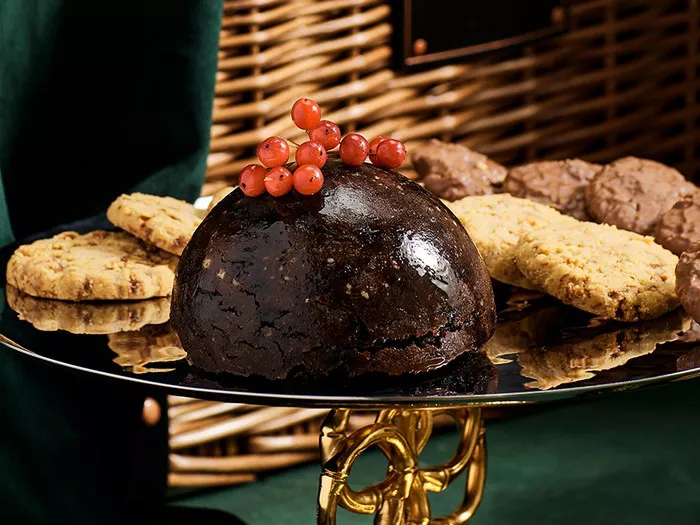Pastel de Nata, also known as Portuguese custard tart, is a delectable and iconic pastry that has captivated taste buds around the world. With its flaky crust and creamy custard filling, it offers a delightful combination of textures and flavors. In this article, we will dive into the world of Pastel de Nata, exploring its origins, key ingredients, and the art of making this mouthwatering treat.
Origins and Cultural Significance
Pastel de Nata has its roots in Portugal, specifically in the city of Lisbon. It is believed to have originated in the early 19th century in the Mosteiro dos Jerónimos, a monastery located in the Belém district of Lisbon. The monks who resided there created the recipe and sold the pastries to support the monastery.
Over time, Pastel de Nata gained popularity beyond the monastery walls, becoming a beloved staple in Portuguese cuisine. Today, it is considered a national treasure and is widely enjoyed throughout Portugal and in Portuguese communities around the world.
Ingredients
Pastel de Nata consists of a few key ingredients that come together to create its distinctive taste and texture. Let’s take a closer look at the components of this delicious pastry:
Puff Pastry: Puff pastry serves as the foundation of Pastel de Nata. It is a light and flaky dough made by layering butter between thin sheets of dough and then repeatedly folding and rolling the dough to create numerous layers. This process results in a pastry that puffs up and becomes golden and crisp when baked.
Egg Custard Filling: The creamy custard filling is the star of Pastel de Nata. It is made from a combination of eggs, sugar, milk or cream, and flavorings. The specific ratio and technique used to prepare the custard may vary among different recipes, but the essence remains consistent—a rich, smooth, and slightly caramelized custard.
Sugar and Cinnamon Topping: Pastel de Nata is typically finished with a sprinkling of powdered sugar and a touch of cinnamon on top. The sugar adds a touch of sweetness and a light, crisp texture, while the cinnamon adds a warm and aromatic flavor.
The Art of Making Pastel de Nata
Creating Pastel de Nata is a labor of love that requires skill and precision. Here’s a general overview of the process:
Preparing the Puff Pastry: Making puff pastry from scratch can be time-consuming, as it involves multiple rounds of folding and rolling. However, store-bought puff pastry can be used as a convenient alternative. The dough is rolled out and then formed into individual tart shells.
Preparing the Custard Filling: The custard filling is made by whisking together eggs, sugar, and flavorings, usually vanilla extract or lemon zest. Milk or cream is then heated and slowly added to the egg mixture while continuously whisking. This helps temper the eggs and create a smooth custard. The mixture is then strained to ensure a silky texture.
Filling and Baking: The prepared custard filling is poured into the prepared tart shells, filling them about three-quarters full. The tarts are then placed in a preheated oven and baked until the custard is set and the pastry turns golden brown. The high heat of the oven helps create the characteristic caramelized top that adds an extra layer of flavor.
Topping and Serving: Once baked, the Pastel de Nata tarts are allowed to cool slightly before being removed from the tart shells. Just before serving, a dusting of powdered sugar and a sprinkle of cinnamon are added to the tops of the tarts. They are typically served warm or at room temperature to fully appreciate their flavors and textures.
Variations and Enhancements
While the classic Pastel de Nata is a treat on its own, there are variations and enhancements that can be made to add unique twists and flavors to this iconic pastry. Here are a few examples:
Flavored Custard: While vanilla is the traditional flavoring for the custard filling, you can experiment with different flavors. Adding a hint of lemon zest, almond extract, or even coffee can bring new dimensions to the custard.
Crust Variations: Though the classic puff pastry crust is most common, you can explore alternative crust options. Some recipes use a sweet shortcrust pastry or a combination of puff pastry and shortcrust. These variations can alter the texture and flavor profile of the tart.
Toppings and Accompaniments: While Pastel de Nata is delightful on its own, you can enhance it with additional toppings and accompaniments. A dollop of whipped cream or a scoop of vanilla ice cream can provide a creamy contrast to the warm tart. Some people enjoy dusting the top with cocoa powder or adding a drizzle of caramel sauce.
Conclusion
Pastel de Nata is a truly indulgent pastry that showcases the artistry of Portuguese baking. With its flaky crust, creamy custard filling, and delicate flavors, it continues to captivate dessert enthusiasts worldwide. Whether enjoyed in a quaint café in Lisbon or homemade in your own kitchen, Pastel de Nata offers a taste of Portugal’s culinary heritage. So, the next time you’re craving a delightful and satisfying treat, consider indulging in a Pastel de Nata and savoring its rich textures and delightful flavors. Bom apetite!


























